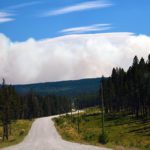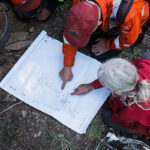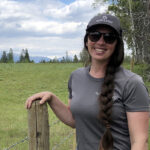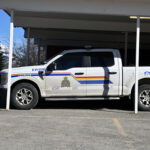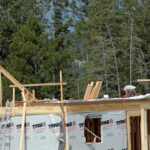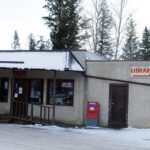Home »

Cascadia TSA cut level lowered
The Cascadia Timber Supply Area (TSA) has a new allowable annual cut (AAC) for timber harvesting.
The Cascadia TSA is dispersed throughout the Interior of British Columbia, mainly in the southeast and northwest of the province. The four southeast blocks are all located to the west of the East Kootenay in the Arrow and Revelstoke TSAs (see above map courtesy BC Government).
Diane Nicholls, B.C.’s chief forester, announced that the new AAC is 356,230 cubic metres, effective Jan. 23. It will provide a reliable supply of Crown timber through competitive auctions, a Jan. 23 Ministry of Forests, Lands, Natural Resource Operations and Rural Development media release noted.
The new AAC is 10% lower than the current AAC of 397,818 cubic metres. The reduction was made to account for new information regarding forest-management practices and economic operability for the TSA.
The Cascadia TSA is assigned to BC Timber Sales (BCTS) and consists of 11 timber-supply blocks. The new cut level includes the following partitions:
* 101,420 cubic metres for the BCTS Kootenay Business Area;
* 63,000 cubic metres for the BCTS Okanagan-Columbia Business Area;
* 65,740 cubic metres for the BCTS Cariboo-Chilcotin Business Area; and
* 126,070 cubic metres for the BCTS Skeena Business Area.
The partitions consider that the TSA is widely spread throughout the province in four business areas.
“After reviewing all of the available information on timber and non-timber resources for the distinct areas of this TSA, and consulting with First Nations, I am satisfied the new cut level will support a sustainable forest industry, while taking into consideration local social and economic objectives,” Nicholls said.
The Cascadia TSA occupies a total area of over 316,000 hectares. It was created in 2011 by combining areas tree farm licences (TFL) and areas transferred from the Revelstoke and Arrow TSAs.
BCTS auctions the timber from this TSA to the highest bidder and uses the bid information to support the provincial market pricing system for setting stumpage rates.
The Cascadia TSA overlaps the traditional territory of 24 First Nations and First Nations groupings: Ktunaxa Nation Council; Shuswap Indian Band; Secwepemc Reconciliation Framework Agreement; Neskonlith Indian Band; Okanagan Nation Alliance; Okanagan Indian Band; Adams Lake Indian Band; Westbank First Nation; Splats’in First Nation; Little Shuswap Lake Indian Band; Tsilhqot’in Engagement Zone ‘A’; Lhatko Dene Nation; Xats’ull First Nation; Tsilhqot’in Nation, Notice of Civil Claim; Nazko First Nation; Kitsumkalum Band Council; Gitxsan Hereditary Chiefs; Kitselas First Nation; Skin Tyee First Nation; Wet’suwet’en First Nation; Metlakatla Band Council; Lax Kw’alaams Band; Office of the Wet’suwet’en; and the Haisla Nation.
Along with this AAC decision, the chief forester today issued an order reducing the AAC attributable to the BCTS Skeena Business Area by seven per cent, to account for the Kitsumkalum-Kitselas Designated Area.
The chief forester’s determination takes into consideration requirements for old growth management areas, riparian areas, wildlife habitat areas and species at risk, such as caribou, bull trout, grizzly bear and ungulates (mountain goats, moose and deer), the ministry media release added.
The chief forester’s allowable annual cut determination is an independent, professional judgment based on information ranging from technical forestry reports, First Nations and public input to the government’s social and economic goals.
Under the Forest Act, the chief forester must determine the allowable annual cut in each of the province’s 37 timber supply areas and 34 tree farm licences at least once every 10 years.
e-KNOW
